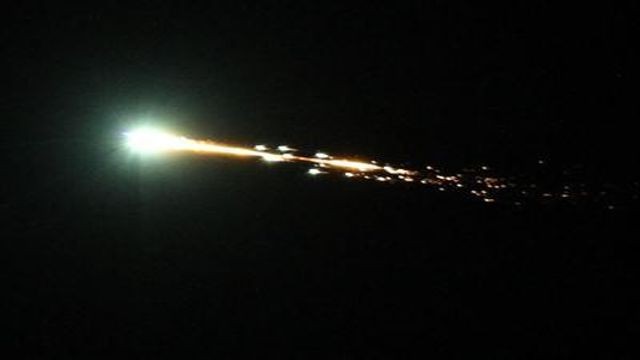| Online: | |
| Visits: | |
| Stories: |

| Story Views | |
| Now: | |
| Last Hour: | |
| Last 24 Hours: | |
| Total: | |
Halleys Comet – Eta Aquarids Meteor Shower Peaks after Midnight Tonight
Halley’s Comet won’t be back in Earth’s vicinity until the summer of 2061, but that doesn’t mean you have to wait 47 years to see it .
.
The comet’s offspring return this week as the annual Eta Aquarid meteor shower. Most meteor showers trace their parentage to a particular comet. The Perseids of August originate from dust strewn along the orbit of comet 109P/Swift-Tuttle, which drops by the inner solar system every 133 years after “wintering” for decades just beyond the orbit of Pluto, but the Eta Aquarids (AY-tuh ah-QWAR-ids) have the best known and arguably most famous parent of all – Halley’s Comet. Twice each year, Earth’s orbital path intersects dust and rock particles strewn by Halley during its cyclic 76-year journey from just beyond Uranus to within the orbit of Venus. When we do, the grit meets its demise in spectacular fashion as wow-inducing meteors.
The Eta Aquarids meteor shower are usually active between April 19 and May 28 every year. It tends to peak around May 6 or May 7.
The Eta Aquarids seem to radiate from the direction of the constellation Aquarius in the sky. The shower is named after the brightest star of the constellation, Eta Aquarii.
The Eta Aquarids is one of the two meteor showers associated with Halley’s Comet. The Earth passes for a second time through Halley’s path around the Sun in October. This creates the Orionid meteor shower, which peaks around October 20.
Add me on Facebook https://www.facebook.com/mrstargazer.nation
Follow me on Twitter - https://twitter.com/STARGAZERNATION
Subscribe on YouTube - http://https://www.youtube.com/user/MRSTARGAZERNATION
+1 the Blog - http://stargazernation.blogspot.co.uk/



